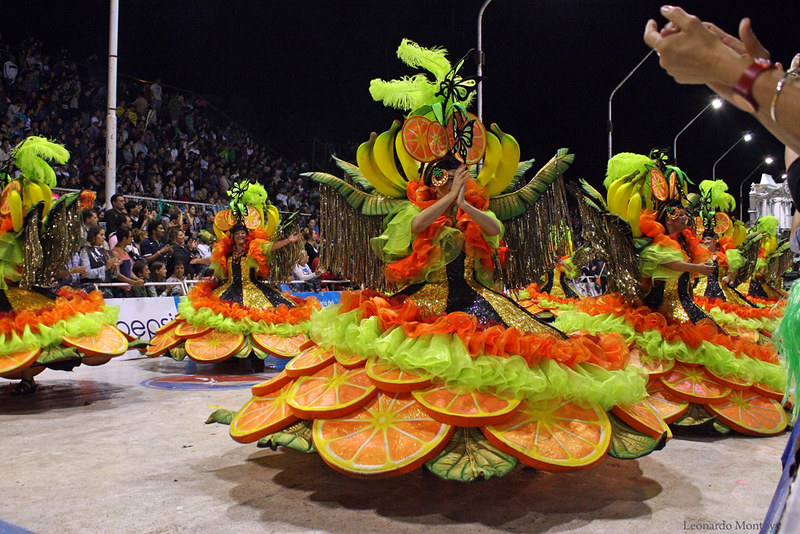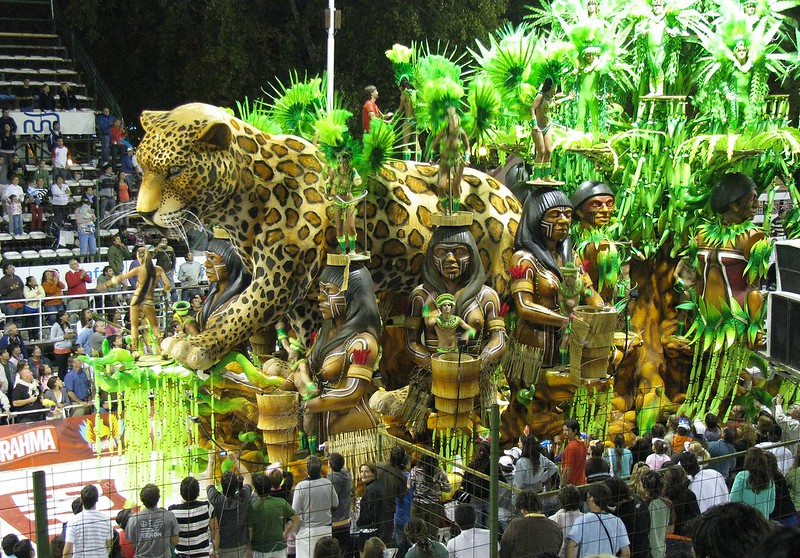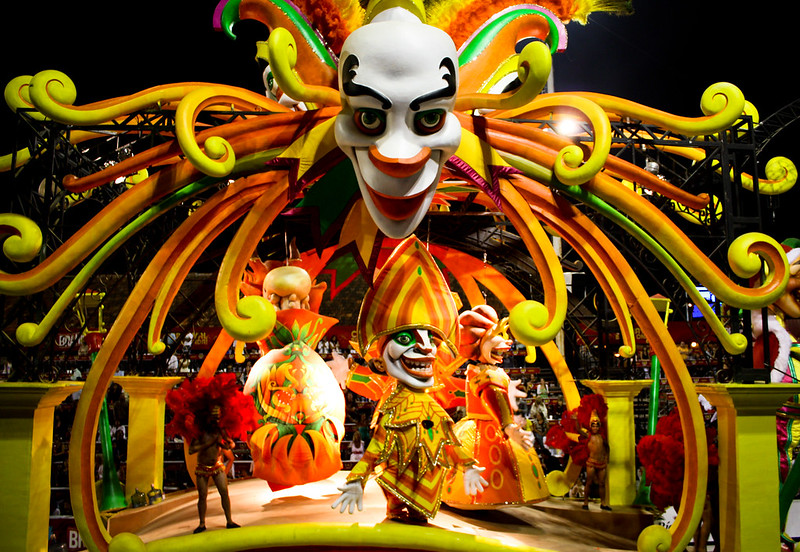Carnaval de Gualeguaychú
Argentina’s Festival of Rhythm and Color
2026/01/09 - 2026/02/27
Every summer, the city of Gualeguaychú in Entre Ríos bursts into life with one of Argentina’s largest and most dazzling carnivals. The Carnaval de Gualeguaychú is a flood of feathers, sequins, samba rhythms, and infectious energy. Over 40,000 people fill the purpose-built “Corsódromo” each weekend, captivated by the pounding drums, the sweet aroma of churros, and dancers resplendent in vibrant costumes.
The festival is held every Saturday night from early January to late February or early March. Locals, tourists, families, and party lovers all come together to experience the electrifying atmosphere that defines Gualeguaychú’s carnival.
Main Attractions
Corsódromo Parade
The heart of the festival is the parade in the 500-meter-long Corsódromo. Five main samba schools (comparsas), each with hundreds of dancers and massive themed floats, compete for the top prize. Live batucada (percussion bands) fill the air with rhythm as waves of feathers and sparkling costumes roll down the avenue. The stands vibrate with the beat, and the crowd is wrapped in the festival’s heat and excitement.
Key Events
In addition to the main parade, there are pre-carnival street parties, children’s parades, and costume contests. Local bars and restaurants host live music and after-parties that last all night. The crowning of the Carnival Queen is a must-see, with dazzling performances and fierce competition. Fireworks and spontaneous samba circles along the riverbank are also highlights.
Costumes and Decorations
Dancers are adorned with enormous feather headdresses, sparkling costumes, and neon body paint. Each comparsa creates themed costumes and floats, often inspired by Argentine traditions or fantasy worlds. The Corsódromo is decorated with banners, lights, and streamers, and many spectators dress festively as well. The feel of confetti and the scent of cotton candy are all part of the sensory experience.
Traditional Food & Drink
Food stalls serve Argentine favorites like choripán (grilled sausage sandwiches), empanadas, asado (barbecue), and sweet churros filled with dulce de leche. The smoky aroma of grilled meat mingles with sweet desserts, and local fruit juices or Fernet with cola keep festival-goers refreshed.
Cultural and Historical Background
The origins of the Gualeguaychú Carnival date back to the late 19th century, when European immigrants brought carnival traditions to Argentina. In Gualeguaychú, these celebrations quickly took root, blending masquerade, music, and parades. Spanish, Italian, and Portuguese influences were especially strong, and locals enjoyed the festivities as a way to mark the end of winter and the arrival of spring.
Carnival originally developed as a “farewell to meat” (from the Latin “carne vale”) before Lent—a time to indulge in food and revelry before the Catholic fasting season. It was an event where everyone, regardless of social class, could dress up, dance, and enjoy music together. In Gualeguaychú, these European traditions merged with Afro-Latin rhythms and local creativity, giving rise to a unique style of celebration.
In the 1970s, the city built the 500-meter-long Corsódromo to accommodate the growing crowds and to professionalize the parades. This transformed the carnival into one of the largest and most important in Argentina, attracting tens of thousands of visitors each year from January to March.
Today, local samba schools (comparsas) spend the entire year preparing costumes, floats, and dance routines. The carnival is a symbol of community pride and unity, passed down through generations and considered the “soul” of Gualeguaychú.
Participant Voices
I joined for the first time from Buenos Aires with friends. The vibrant costumes and music were overwhelming. Locals invited us to dance together, and I felt the whole city unite as one. It was an unforgettable experience.
Fun Facts
- Some costumes can weigh up to 15 kilograms and take hundreds of hours to make.
- Known as the “Carnival of the Country,” it’s one of Argentina’s most important carnivals.
- The carnival is so popular it’s broadcast live on national television.
Festival Dates
The Gualeguaychú Carnival is held every Saturday night from early January to late February or early March at the Corsódromo in Gualeguaychú, Entre Ríos, Argentina.
The event schedule is subject to change. Please check the official website for the most up-to-date information.
Information
| Name | Carnaval de Gualeguaychú |
| Country | Argentina |
| Area | Gualeguaychú |
| Date | 2026/01/09 - 2026/02/27 |
| Link |
Upcoming Festivals
Dia de la Virgen de Guadalupe Mexico
A Festival Weaving Faith, Fervor, and Mexican Identity
2025/12/11L'Escalade Switzerland
Geneva’s Grand Winter Festival of Courage, Chocolate, and Community
2025/12/12Umkhosi Wokweshwama South Africa
The Zulu First Fruits Festival—A Sacred Celebration of Land, Ancestors, and Renewal
2025/12/12Lucia Festival (St. Lucia's Day) Sweden
A Festival of Light Illuminating the Nordic Darkness
2025/12/15Las Posadas Mexico
The Luminous Quest for Sacred Shelter
2025/12/22Noche de Rabanos (Night of the Radishes) Mexico
A celebration blending art, farming heritage, and cultural traditions
2025/12/23Chant of the Sybil on Majorca Spain
A Medieval Prophecy Echoes Through Majorcan Christmas
2025/12/23‘Hatajo de Negritos’ and the ‘Hatajo de Pallitas’ Peru
A Christmas Festival of Rhythm, Faith, and Afro-Andean Heritage in Peru’s Ica Region
2025/12/24Harbin International Ice and Snow Sculpture Festival China
A Frozen Wonderland Where Art and Adventure Merge
2025/12/24Takanakuy Peru
The Andean Festival of Reconciliation by Fist—How Confrontation Creates Year-End Peace and Bonds



